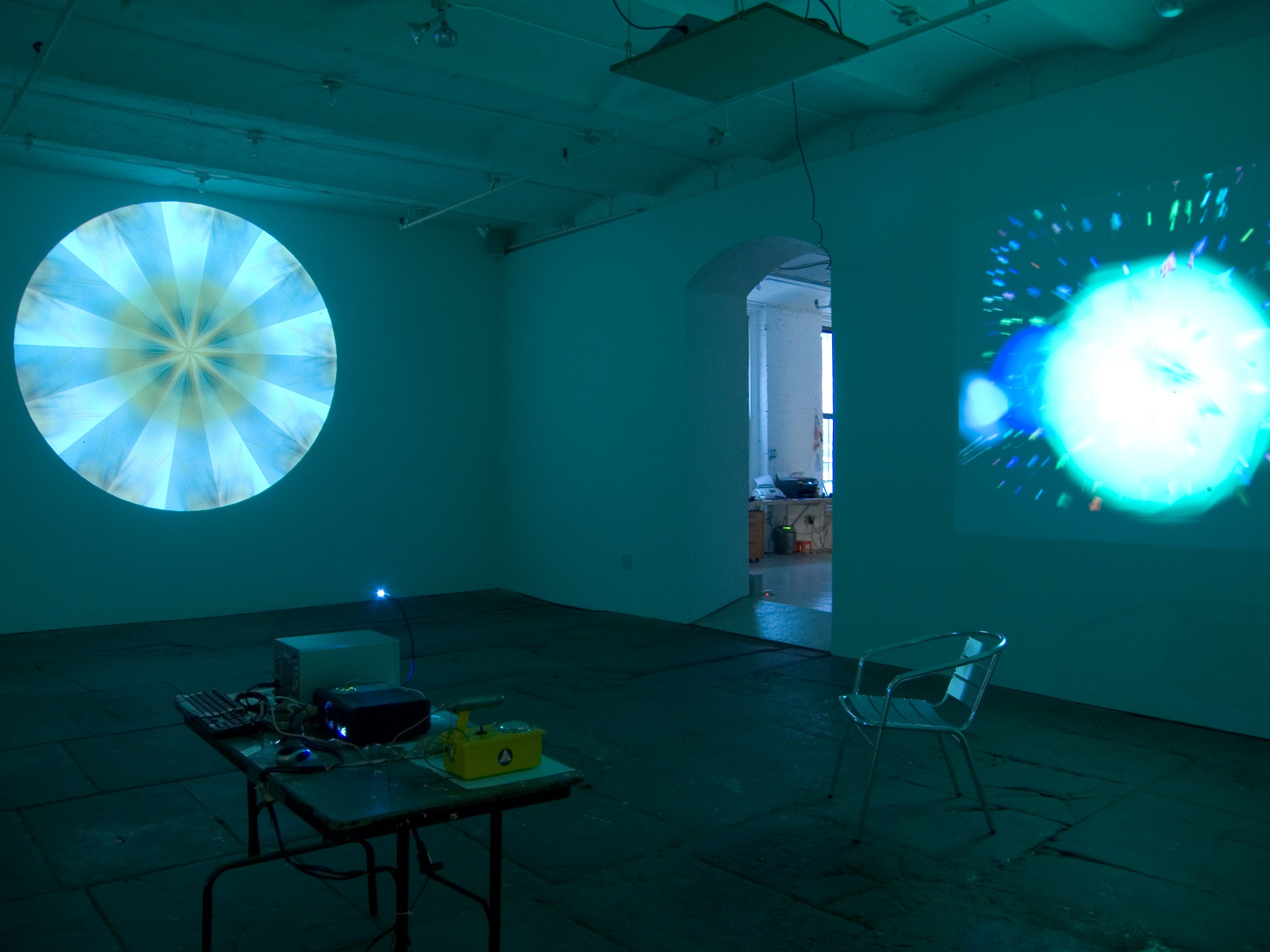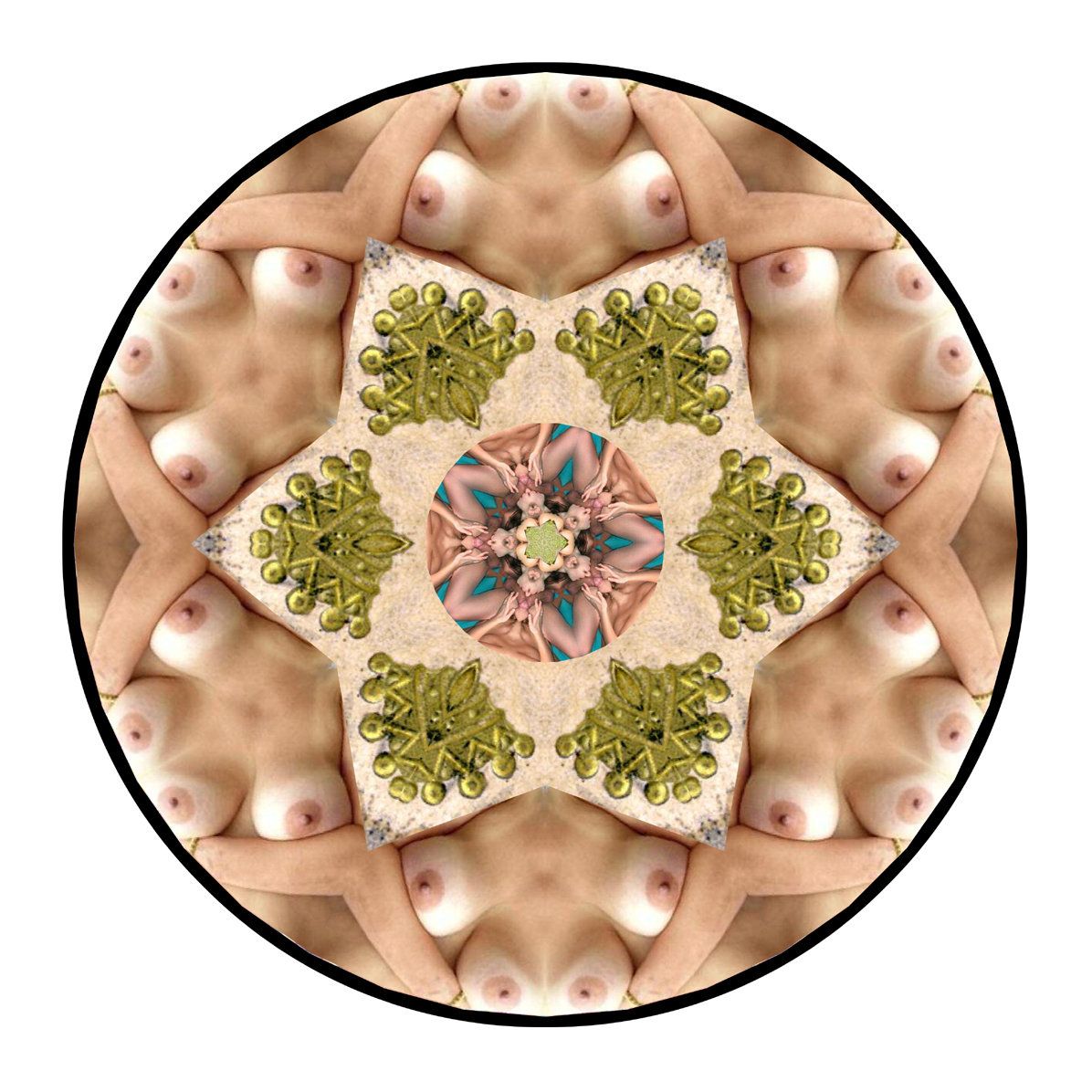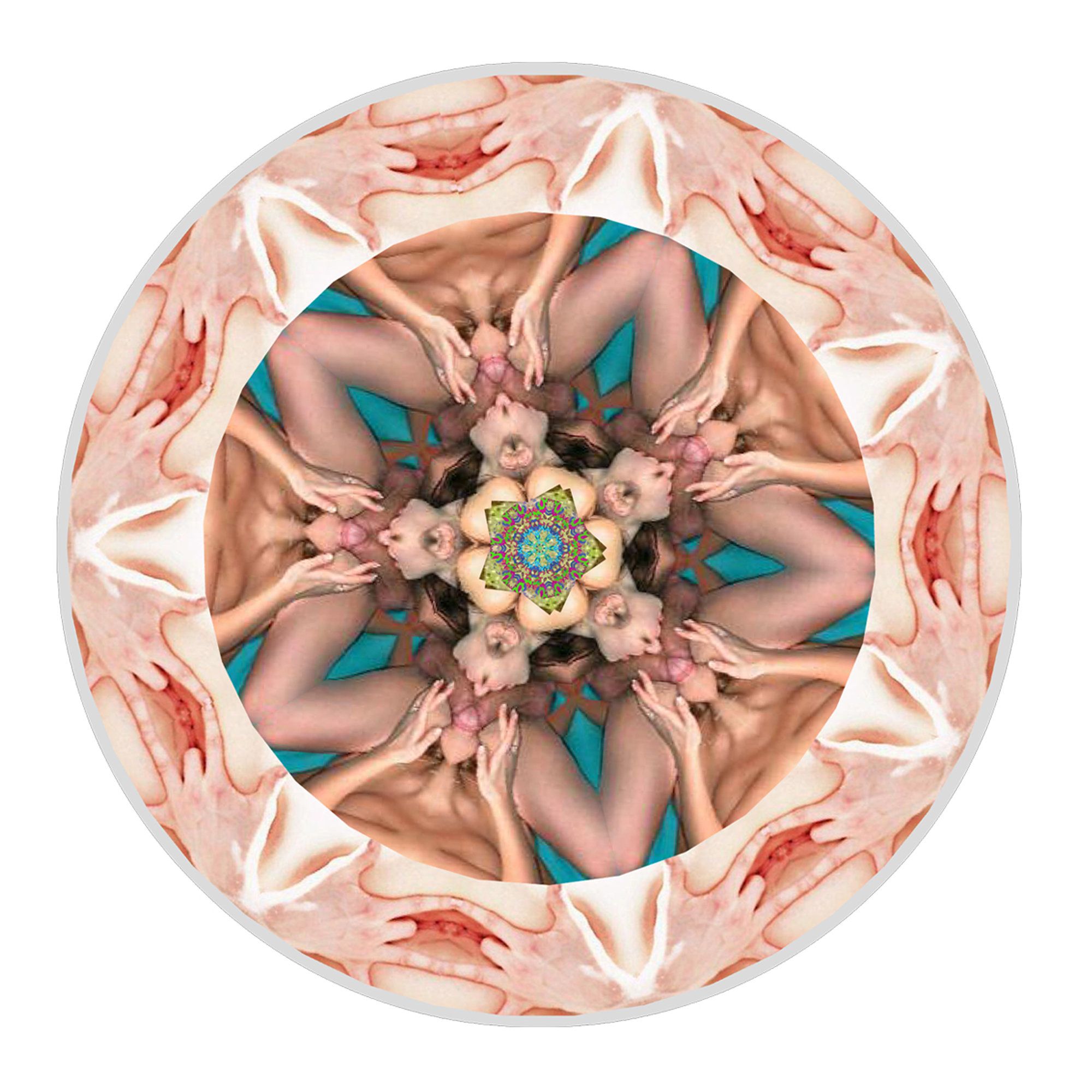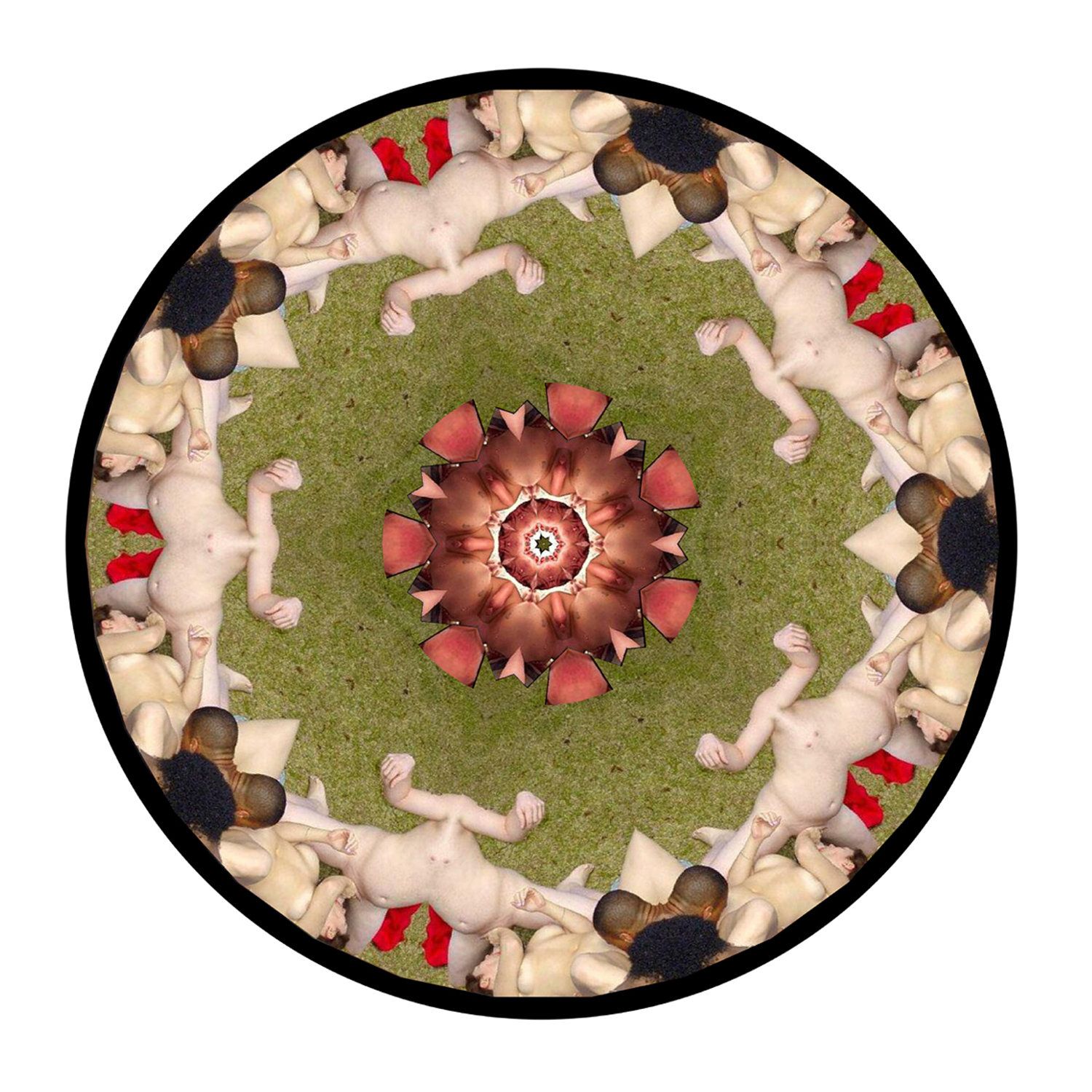Luke Murphy
Everything Made Pretty, Again, Dec 9 – Jan 22, 2006
Past: 55 Chrystie St
Installation view, Everything Made Pretty, Again, Canada, New York, 2005

Installation view, Everything Made Pretty, Again, Canada, New York, 2005

Artworks

Luke Murphy,
Demon Collisions,
2005–07,
Dimensions variable,
Application, source code, image reservoir, geiger counter, uranium, computer hardware

Kaleidoscope #,
2005,
30 × 22 in (76.20 × 55.88 cm)
Pigment print, artist proof #1

Luke Murphy,
Kaleidoscope #1,
2005,
24 × 18 in (60.96 × 45.72 cm)
Pigment print, artist proof #1

Luke Murphy,
Kaleidoscope #6,
2005,
24 × 18 in (60.96 × 45.72 cm)
Pigment print, artist proof #1

Luke Murphy,
Kaleidoscope #7,
2005,
24 × 18 in (60.96 × 45.72 cm)
Pigment print, artist proof #1

Luke Murphy,
Kaleidoscope #9,
2005,
30 × 22 in (76.20 × 55.88 cm)
Pigment print, artist proof #1
Press Release
The exhibit is comprised of two full-scale digital projections. One is a digital kaleidoscope that produces mesmerizing composite forms as it harvests images and words from web sites. The second is a digital projection of 49 animated elements that move and “explode” in response to the ticks of a Geiger counter attached to the computer. The works are complimentary to each other: the kaleidoscope evacuates the meaning-content from the images and produces beautiful patterns and the "Demon Collisions" piece attempts to reconstruct some kind of organizing principle from the pure random explosions of the Geiger counter.
The kaleidoscope was invented by Sir David Brewster in the 19th Century and was extremely popular as a kind of parlor diversion. The word is a Greek amalgam and means literally “beautiful forms”. Images from a kaleidoscope are universally appealing but as a kind of aesthetic short-circuit: they are non-transformative beauty, like a flower. The gallery is now transformed into a large kaleidoscope, often casting its eye on the most varied and colorful of elements of the digital landscape – pornography; the ever present latent wealth of imagery that is too vast for any internet statistician to measure and which represents the infinite wish fulfillment world of the online user. Intermingled with the kaleidoscope’s ever changing forms are the words pulled from keyword identifiers from adult websites, Holbein’s anamorphic skull de-anamorphized and video of the gallery backroom. All things that have or had meaning are animated, rotated and recombined into a play of light and form – producing new, beautiful and sometimes distressing combinations of bodies and parts. If Jurgen Habermas is right and our age’s economy is driven not by the scarcity of control over nature, but the scarcity of meaning and motivation, watching the kaleidoscope is a virtual reflection on that state.
Ticking in the background is the Geiger counter driven demon animation. Blue sprites expand across a hyperbolic curve and occasionally flare as a single tick from a radiation source or natural beta particle generates a higher voltage. The flare opens and expands and reveals a name chosen from a pool of demon, angel and alchemical names. The demons and angels derive from a Gnostic Bible’s text, the Origin of the World; naming each event accords structure to the randomness. Labeling becomes a gesture to give meaning back. And while the beautiful play of light and color move across the screen, the ever-present ticking reminds us of the lethal radioactivity that is the source for the variation. Radioactive decay is the ultimate alchemy – the real transformation of one thing into another, which the animation and production of demon flares visualizes. Radioactive decay is also the standard of randomness; in this context it is the figure for the pool of anxieties that make up our world and which are constantly in need of organization.
Luke Murphy has recently given Powerpoint presentations of his work at the NADA Art Fair in Miami, The Kitchen and PS 122.He graduated with and MFA from SUNY Purchase after completing his BFA from the Nova Scotia College of Art and Design and a BS from the University of Toronto.
Press